#commercial technical operations
Text
#At Refrigerant Center INC#we specialize in providing comprehensive refrigerant solutions tailored to meet the diverse needs of our clients. With a deep understanding#Ventilation#and Air Conditioning) industry and its evolving regulatory landscape#we are committed to offering environmentally responsible refrigerant products and services.#Our company prides itself on being a trusted partner for businesses operating in various sectors#including commercial#industrial#and residential. Whether you're a facility manager#HVAC contractor#or equipment manufacturer#we have the expertise and resources to fulfill your refrigerant requirements efficiently and affordably.#Key Services and Products:#Refrigerant Sales: We offer a wide range of refrigerant products#including traditional HFCs (Hydrofluorocarbons)#low-GWP (Global Warming Potential) alternatives like HFOs (Hydrofluoroolefins)#and natural refrigerants such as CO2 and ammonia. Our extensive inventory ensures that clients can find the right refrigerant for their spe#Refrigerant Reclamation: Recognizing the importance of sustainability#we provide refrigerant reclamation services aimed at recovering#purifying#and reprocessing used refrigerants. Through our state-of-the-art reclamation facilities#we help clients minimize environmental impact while maximizing cost savings.#Regulatory Compliance Assistance: Navigating the complex regulatory landscape surrounding refrigerants can be challenging. Our team stays u#national#and international regulations#including EPA (Environmental Protection Agency) regulations in the United States.#Technical Support: We understand that proper handling and usage of refrigerants are critical for the safety and efficiency of HVAC systems.#training#and educational resources to assist clients in handling refrigerants safely and effectively.#Customized Solutions: Every client has unique requirements
3 notes
·
View notes
Text
Professional Technical and Landscape Service
Introduction:
Technical and Landscape service www.softstardubai.ae is best company in Dubai.
Dubai known for its awe-inspiring skyline and innovative infrastructure, is a thriving metropolis that constantly evolves and embraces technological advancements. To support the city’s development and maintain its captivating landscapes. Moreover and wide again and range of the Soft Star technical and more landscape services have emerged near too Dubai. These are services play again pivotal role in enhancing urban living and then again by providing state of the art solutions for construction maintenance and green space etc.
Technical Services:
Dubai’s rapid growth necessitates the expertise of technical service providers who specialize in various areas. First Construction companies second architectural firms and engineering consultancies offer their expertise in designing and building iconic structures that define the city’s landscape. In addition from too be towering skyscrapers too intricate urban planning and again these technical
services contribute to Dubai’s unique skyline and urban fabric.
Moreover, facilities and management companies are key players in maintaining the functionality and efficiency of Dubai’s infrastructure important. They provide comprehensive services. Moreover maintenance repairs, and energy again management for residential and commercial buildings, ensuring that the city’s facilities operate seamlessly.
Landscape Services:
Dubai’s commitment to creating lush green spaces amidst its urban environment has led to a thriving landscape services industry. Landscape architects and designers are instrumental in transforming open areas. and parks and gardens into breathtaking landscapes. By integrating sustainable design practices and innovative techniques or they harmonize the natural and built environments. They providing residents and visitors with serene and aesthetically pleasing surroundings.
To ensure the well-being of these green spaces and landscape maintenance companies employ skilled horticulturists and gardeners. They meticulously care for the plants or trees and lawns ensuring their health and vitality. From irrigation systems to pest control, these services maintain the beauty and functionality of Dubai’s green areas.
Best Technical and Landscape service:
Technical and Landscape service to a range of professional service focused on the design or installation and maintenances of the outdoor spaces and the infrastructure associated with them. These services are essential for creating aesthetically pleasing and functional environments in residential or commercial and public settings.
Synergy between Technical and Landscape Service:
The seamless integration of technical and landscape services near Dubai offers numerous benefits to the city and its residents. Furthermore By combining innovative construction again
methods with sustainable landscape designs. In addition they create too harmonious urban environment that prioritizes both aesthetics and functionality more.
For instance, incorporating green spaces within too skyscrapers not only enhances the visual appeal but also improves air quality and provides a retreat for residents. Next Technical services contribute to the construction of these green buildings. landscape services maintain and nurture the plants within them.
Conclusion:
The availability of technical and landscape services near Dubai. They played a vital role in shaping the city’s infrastructure and green spaces. Finally through their expertise again more commitment too innovation. These service providers contribute to Dubai’s reputation and as a global hub of modernity and sustainable living etc. Moreover as the city and continues too evolve and the collaboration between technical and landscape are services will further enhance the urban experience ensuring a harmonious blend of technology, architecture, and natural beauty.
#Introduction:#Technical and Landscape service www.softstardubai.ae is best company in Dubai.#Dubai known for its awe-inspiring skyline and innovative infrastructure#is a thriving metropolis that constantly evolves and embraces technological advancements. To support the city’s development and maintain it#Technical Services:#Dubai’s rapid growth necessitates the expertise of technical service providers who specialize in various areas. First Construction companie#services contribute to Dubai’s unique skyline and urban fabric.#Moreover#facilities and management companies are key players in maintaining the functionality and efficiency of Dubai’s infrastructure important. Th#and energy again management for residential and commercial buildings#ensuring that the city’s facilities operate seamlessly.#Landscape Services:#Dubai’s commitment to creating lush green spaces amidst its urban environment has led to a thriving landscape services industry. Landscape#To ensure the well-being of these green spaces and landscape maintenance companies employ skilled horticulturists and gardeners. They metic#these services maintain the beauty and functionality of Dubai’s green areas.#Best Technical and Landscape service:#Technical and Landscape service to a range of professional service focused on the design or installation and maintenances of the outdoor sp#Synergy between Technical and Landscape Service:#The seamless integration of technical and landscape services near Dubai offers numerous benefits to the city and its residents. Furthermore#methods with sustainable landscape designs. In addition they create too harmonious urban environment that prioritizes both aesthetics and f#For instance#incorporating green spaces within too skyscrapers not only enhances the visual appeal but also improves air quality and provides a retreat#Conclusion:#The availability of technical and landscape services near Dubai. They played a vital role in shaping the city’s infrastructure and green sp#architecture#and natural beauty.
1 note
·
View note
Text
Student Experiments Soar!
youtube
Have you ever wondered what it takes to get a technology ready for space? The NASA TechRise Student Challenge gives middle and high school students a chance to do just that – team up with their classmates to design an original science or technology project and bring that idea to life as a payload on a suborbital vehicle.
Since March 2021, with the help of teachers and technical advisors, students across the country have dreamed up experiments with the potential to impact space exploration and collect data about our planet.
So far, more than 180 TechRise experiments have flown on suborbital vehicles that expose them to the conditions of space. Flight testing is a big step along the path of space technology development and scientific discovery.
The 2023-2024 TechRise Challenge flight tests took place this summer, with 60 student teams selected to fly their experiments on one of two commercial suborbital flight platforms: a high-altitude balloon operated by World View, or the Xodiac rocket-powered lander operated by Astrobotic. Xodiac flew over the company’s Lunar Surface Proving Ground — a test field designed to simulate the Moon’s surface — in Mojave, California, while World View’s high-altitude balloon launched out of Page, Arizona.


Here are four innovative TechRise experiments built by students and tested aboard NASA-supported flights this summer:
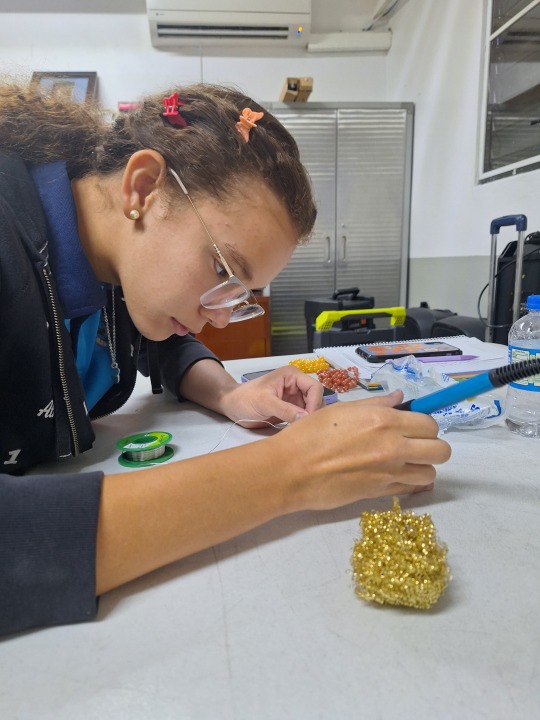
1. Oobleck Reaches the Skies
Oobleck, which gets its name from Dr. Seuss, is a mixture of cornstarch and water that behaves as both a liquid and a solid. Inspired by in-class science experiments, high school students at Colegio Otoqui in Bayomón, Puerto Rico, tested how Oobleck’s properties at 80,000 feet aboard a high-altitude balloon are different from those on Earth’s surface. Using sensors and the organic elements to create Oobleck, students aimed to collect data on the fluid under different conditions to determine if it could be used as a system for impact absorption.
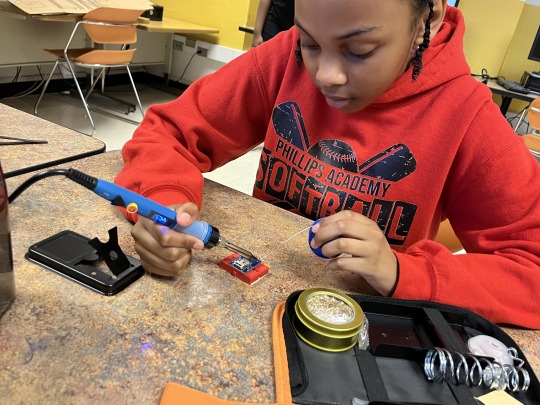
2. Terrestrial Magnetic Field
Middle school students at Phillips Academy International Baccalaureate School in Birmingham, Alabama, tested the Earth’s magnetic field strength during the ascent, float, and descent of the high-altitude balloon. The team hypothesized the magnetic field strength decreases as the distance from Earth’s surface increases.
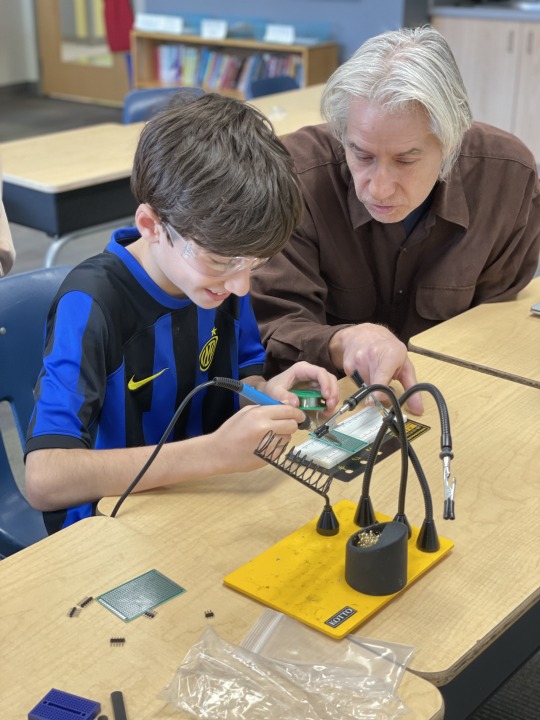
3. Rocket Lander Flame Experiment
To understand the impact of dust, rocks, and other materials kicked up by a rocket plume when landing on the Moon, middle school students at Cliff Valley School in Atlanta, Georgia, tested the vibrations of the Xodiac rocket-powered lander using CO2 and vibration sensors. The team also used infrared (thermal) and visual light cameras to attempt to detect the hazards produced by the rocket plume on the simulated lunar surface, which is important to ensure a safe landing.

4. Rocket Navigation
Middle and high school students at Tiospaye Topa School in LaPlant, South Dakota, developed an experiment to track motion data with the help of a GPS tracker and magnetic radar. Using data from the rocket-powered lander flight, the team will create a map of the flight path as well as the magnetic field of the terrain. The students plan to use their map to explore developing their own rocket navigation system.
youtube
The 2024-2025 TechRise Challenge is now accepting proposals for technology and science to be tested on a high-altitude balloon! Not only does TechRise offer hands-on experience in a live testing scenario, but it also provides an opportunity to learn about teamwork, project management, and other real-world skills.
“The TechRise Challenge was a truly remarkable journey for our team,” said Roshni Ismail, the team lead and educator at Cliff Valley School. “Watching them transform through the discovery of new skills, problem-solving together while being driven by the chance of flying their creation on a [rocket-powered lander] with NASA has been exhilarating. They challenged themselves to learn through trial and error and worked long hours to overcome every obstacle. We are very grateful for this opportunity.”
Are you ready to bring your experiment design to the launchpad? If you are a sixth to 12th grade student, you can make a team under the guidance of an educator and submit your experiment ideas by November 1. Get ready to create!

Make sure to follow us on Tumblr for your regular dose of space!
345 notes
·
View notes
Note
What would you say are good reasons to use a VPN?
bypassing countrywide/internet provider blocklists or monitoring (of porn, lgbt content, etc (often just changing ur dns server (see cloudflare dns or quad9) will also be enough, but this might be more risky)), piracy, technically bypassing geoblocks on content (but like, just pirate shit lol), as one of multiple layers when doing other fun illegal shit online (do not ask me for specific advice, just a commercial vpn will not be sufficient protection) etc.. a vpn will not magically protect you from getting hacked or inherently increase security, and having one always enabled will not do much more than just slowing your internet down for most users. regarding isp/government monitoring it also simply shifts who you have to trust to another commercial entity, often operating under thin margins while being easily subpoenad, generally dont trust a privacy focused company that has a suspiciously high marketing budget. (furthermore companies such as nordvpn have been officially found of false advertising by at least the UK government, pointing this out in their replies on twitter will get you blocked, same with poining out how trivially they were hacked in the past and how shoddy their security has been at times)
2K notes
·
View notes
Text
The number of commercial-scale Bitcoin mining operations in the U.S. has increased sharply over the last few years; there are now at least 137. Similar medical complaints have been registered near facilities in Arkansas and North Dakota. And the Bitcoin mining industry is urgently trying to push bills through state legislatures, including in Indiana and Missouri, which would exempt Bitcoin mines from local zoning or noise ordinances. In May, Oklahoma governor Kevin Stitt signed a “Bitcoin Rights” bill to protect miners and prevent any future attempts to ban the industry.
Much of the American Bitcoin mining industry can now be found in Texas, home to giant power plants, lax regulation, and crypto-friendly politicians. In October 2021, Governor Greg Abbott hosted the lobbying group Texas Blockchain Council at the governor’s mansion. The group insisted that their industry would help the state’s overtaxed energy grid; that during energy crises, miners would be one of the few energy customers able to shut off upon request, provided that they were paid in exchange. After meeting with the lobbyists, Abbott tweeted that Texas would soon be the “#1 [state] for blockchain & cryptocurrency.”
Technically there is federal mandate to regulate noise, which stems from the 1972 Noise Control Act—but it was essentially de-funded during the Reagan administration. This leaves noise regulation up to states, cities, and counties. New York City, for instance, has a noise code which officially caps restaurant music and air conditioning at 42 decibels (as measured within a nearby residence). Texas’s 85 decibels, in contrast, is by far the loudest state limit in the nation, says Les Blomberg, the executive director of the nonprofit Noise Pollution Clearinghouse. “It is a level that protects noise polluters, not the noise polluted,” he says.
The residents of Granbury feel they’ve been lied to. In 2023, the site’s previous operators, US Bitcoin Corp, constructed a wall around the mine almost 2,000 feet long and claimed that they had “solved the concern.” But Shirley says that the complaints from the community about the sound actually increased when the wall was nearing completion last fall. Since Marathon bought the facility outright in December, its hash rate, or computational power expended, has doubled.
Any statewide legislation is sure to hit significant headwinds, because the very idea of regulation runs contrary to many Texans’ political beliefs. “As constitutional conservatives, they have taken our core values and used that against us,” says Demetra Conrad, a city council member in the nearby town of Glen Rose.
In the week before this article’s publication, two more Granbury residents suffered from acute health crises. The first was Tom Weeks. “This whole thing is an eye opener for me into profit over people,” Weeks says in a phone call from the ICU.
The second person affected was the five-year-old Indigo Rosenkranz. Her mother, Sarah, was terrified and now feels she has no choice but to get a second mortgage to move away from the mine. “A second one would really be a lot,” she says. “God will provide, though. He always sees us through.”
shocking! texans suffer from deregulation and ineffective walls
93 notes
·
View notes
Note
hey support group
I need help with something… My dad is so obsessed with my body and how I’m so muscular and I’m only 25 but he is so fat and hairy and he wants to swap bodies with me!
So what I’m asking is let’s hope he doesn’t swap with me!?
"You dirty bastard" you snap at your father. He lives in a shithole. He's never given you anything. No love, but no money either. All your life you've had to work for everything, while your father fell into self-pity after your mother's death. You are proud of everything you have achieved. We're not just talking about a hammer body. You graduated with honors. You are the youngest junior partner in your law firm. And now you're squatting in the shithole your father calls his apartment…

Your father has just shown you the display of his Chronivac. "Get used to this shithole and get used to being a dirty bastard. Because in a few minutes you'll be a dirty bastard in a shithole yourself." Your father's face shows no emotion. You also try to stay cool. But inside you're tearing yourself apart with fear and anger. You look into your father's neglected face. He is only 43 years old. But he looks like an old man. Damn it, this can't be your fate. 10… 9… 8… 7… 6… The countdown on the Chronivac's display counts down mercilessly.

It should have been clear to you that your loser of a father is not capable of operating a Chronivac. Of course, he didn't realize the difference between "body swap" and "2-by-2 merge"… Your body, which was smooth as silk until just now, is pretty hairy. You no longer look 25. Nor are you anymore. You've just turned 34. Commercial manager at the mechanical engineering company where you did your apprenticeship. An impressive career. Like that of your brother, who is the technical director at the same company. You haven't actually done anything on your own since you were born. You are inseparable.

It's a bit strange that you somehow can't remember the time before your 25th birthday… High school, college, apprenticeship… All somehow gone. You ask your brother if he can still remember your parents. He gives you a friendly chest bump and tells you not to distract him. You still don't stand a chance against him at squash. He must be dreaming about that!
124 notes
·
View notes
Text
The US Copyright Office is currently asking for input on generative AI systems ...
... to help assess whether legislative or regulatory steps in this area are warranted.
Here is what I wrote to them, and what I want as a creative professional:
AI systems undermine the value of human creative thinking and work, and harbor a danger for us creative people that should not be underestimated. There is a risk of a transfer of economic advantage to a few AI companies, to the detriment of hundreds of thousands of creatives. It is the creative people with their works who create the data and marketing basis for the AI companies, from which the AI systems feed.
AI systems cannot produce text, images or music without suitable training material, and the quality of that training material has a direct influence on the quality of the results. In order to supply the systems with the necessary data, the developers of those AI systems are currently using the works of creative people - without consent or even asking, and without remuneration. In addition, creative professionals are denied a financial participation in the exploitation of the AI results created on the basis of the material.
My demand as a creative professional is this: The works and achievements of creative professionals must also be protected in digital space. The technical possibility of being able to read works via text and data mining must not legitimize any unlicensed use!
The remuneration for the use of works is the economic basis on which creative people work. AI companies are clearly pursuing economic interests with their operation. The associated use of the work for commercial purposes must be properly licensed, and compensated appropriately.
We need transparent training data as an access requirement for AI providers! In order to obtain market approval, AI providers must be able to transparently present this permission from the authors. The burden of proof and documentation of the data used - in the sense of applicable copyright law - lies with the user and not with the author. AI systems may only be trained from comprehensible, copyright-compliant sources.
____________________________
You can send your own comment to the Copyright Office here: https://www.regulations.gov/document/COLC-2023-0006-0001
My position is based on the Illustratoren Organisation's (Germany) recently published stance on AI generators:
https://illustratoren-organisation.de/2023/04/04/ki-aber-fair-positionspapier-der-kreativwirtschaft-zum-einsatz-von-ki/
172 notes
·
View notes
Text
Below are 10 featured Wikipedia articles. Links and descriptions are below the cut.
The election in 1860 for the position of Boden Professor of Sanskrit at the University of Oxford was a competition between two candidates offering different approaches to Sanskrit scholarship. One was Monier Williams, an Oxford-educated Englishman who had spent 14 years teaching Sanskrit to those preparing to work in British India for the East India Company. The other, Max Müller, was a German-born lecturer at Oxford specialising in comparative philology, the science of language.
Adolfo Farsari (Italian pronunciation: [aˈdolfo farˈsaːri]; 11 February 1841 – 7 February 1898) was an Italian photographer based in Yokohama, Japan. His studio, the last notable foreign-owned studio in Japan, was one of the country's largest and most prolific commercial photographic firms. Largely due to Farsari's exacting technical standards and his entrepreneurial abilities, it had a significant influence on the development of photography in Japan.
Girl Pat was a small fishing trawler, based at the Lincolnshire port of Grimsby, that in 1936 was the subject of a media sensation when its captain took it on an unauthorised transatlantic voyage. The escapade ended in Georgetown, British Guiana, with the arrest of the captain, George "Dod" Orsborne, and his brother. The pair were later imprisoned for the theft of the vessel.
Abu Muhammad Hasan al-Kharrat (Arabic: حسن الخراط Ḥassan al-Kharrāṭ; 1861 – 25 December 1925) was one of the principal Syrian rebel commanders of the Great Syrian Revolt against the French Mandate. His main area of operations was in Damascus and its Ghouta countryside. He was killed in the struggle and is considered a hero by Syrians.
Marjorie Cameron Parsons Kimmel (April 23, 1922 – July 24, 1995), who professionally used the mononym Cameron, was an American artist, poet, actress and occultist. A follower of Thelema, the new religious movement established by the English occultist Aleister Crowley, she was married to rocket pioneer and fellow Thelemite Jack Parsons.
Maya stelae (singular stela) are monuments that were fashioned by the Maya civilization of ancient Mesoamerica. They consist of tall, sculpted stone shafts and are often associated with low circular stones referred to as altars, although their actual function is uncertain. Many stelae were sculpted in low relief, although plain monuments are found throughout the Maya region. The sculpting of these monuments spread throughout the Maya area during the Classic Period (250–900 AD), and these pairings of sculpted stelae and circular altars are considered a hallmark of Classic Maya civilization.
The North Norfolk Coast Site of Special Scientific Interest (SSSI) is an area of European importance for wildlife in Norfolk, England. It comprises 7,700 ha (19,027 acres) of the county's north coast from just west of Holme-next-the-Sea to Kelling, and is additionally protected through Natura 2000, Special Protection Area (SPA) listings; it is also part of the Norfolk Coast Area of Outstanding Natural Beauty (AONB). The North Norfolk Coast is also designated as a wetland of international importance on the Ramsar list and most of it is a Biosphere Reserve.
Preening is a maintenance behaviour found in birds that involves the use of the beak to position feathers, interlock feather barbules that have become separated, clean plumage, and keep ectoparasites in check. Feathers contribute significantly to a bird's insulation, waterproofing and aerodynamic flight, and so are vital to its survival. Because of this, birds spend considerable time each day maintaining their feathers, primarily through preening.
The Wells and Wellington affair was a dispute about the publication of three papers in the Australian Journal of Herpetology in 1983 and 1985. The periodical was established in 1981 as a peer-reviewed scientific journal focusing on the study of amphibians and reptiles (herpetology). Its first two issues were published under the editorship of Richard W. Wells, a first-year biology student at Australia's University of New England. Wells then ceased communicating with the journal's editorial board for two years before suddenly publishing three papers without peer review in the journal in 1983 and 1985. Coauthored by himself and high school teacher Cliff Ross Wellington, the papers reorganized the taxonomy of all of Australia's and New Zealand's amphibians and reptiles and proposed over 700 changes to the binomial nomenclature of the region's herpetofauna.
Wulfhere or Wulfar (died 675) was King of Mercia from 658 until 675 AD. He was the first Christian king of all of Mercia, though it is not known when or how he converted from Anglo-Saxon paganism. His accession marked the end of Oswiu of Northumbria's overlordship of southern England, and Wulfhere extended his influence over much of that region.
26 notes
·
View notes
Text
Under the plan individuals or companies can pay $148 to protect 1 square kilometre of ocean from threats such as illegal fishing and plastic waste for a period of 20 years.
“Niue is just one island in the middle of the big blue ocean,” Tagelagi told the Associated Press. “We are surrounded by the ocean, and we live off the ocean. That’s our livelihood.”
He said Niueans inherited and learned about the ocean from their forefathers and they want to be able to pass it on to the next generation in sustainable health.
Most fishing in Niue is to sustain local people, although there are some small-scale commercial operations and occasional offshore industrial-scale fishing, according to the UN Food and Agriculture Organization.
“Because of all the illegal fishing and all the other activities at the moment, we thought that we should be taking the lead, to teach others that we’ve got to protect the ocean,” Tagelagi said.
Under the plan, the sponsorship money – called Ocean Conservation Commitments – will be administered by a charitable trust.
Niue will buy 1,700 sponsorship units, representing one for each of its citizens. Other launch donors include philanthropist Lyna Lam and her husband, Chris Larsen, who co-founded blockchain company Ripple, and US based nonprofit Conservation International, which helped set up some technical aspects of the scheme.
11 notes
·
View notes
Text
How is it that a small wedge of the South American continent, long claimed by a major European power and still administered by it, could present a profile of wilderness at the end of the twentieth century? How might this same location on the globe have proved useful for such an unlikely combination of purposes as the resettlement of convicted criminals and the launching of rockets?
French Guiana remains a remarkably insignificant artifact of the political landscape - rarely noticed by most of France, let alone anyone else - as well as one of the least settled regions of the world. It has also hosted two exceptional experiments of the French state: the historical penal colony known in English as “Devil's Island,” which operated between 1852 and 1946, and the contemporary space center that launches the European consortium rocket Ariane, responsible for transporting a good half of the commercial satellites orbiting our globe. [...] Its base, the Guiana Space Center (CSG), indeed lived up to its slogan, becoming “Europe's Spaceport,” a center of high technology near the equator. [...]
---
[T]he penal colony begins operation in the middle of the nineteenth century, partly as a substitute for a system of plantation slavery. It conceives of French Guiana as open land for agricultural settlement, fertile ground for a tropical - and French - Australia, where the action of moral reform can translate into a scheme of colonization. [...] [T]hese early hopes are belied by the high mortality of the convicts [...]. Despite periodic calls for reform and increasing international discomfort, the bagne lasts through World War II. It leaves a deep mark on French Guiana, in both symbolic and material terms. As the movement of seventy thousand exiles progresses, the surrounding landscape shifts from a luxuriant field of dreams into a tableau of terror. At the same time, the colony as a whole grows accustomed to the presence of this artificial prison world within it [...].
---
The space center begins operation in the second half of the twentieth century, in the midst of the Space Race and in the aftermath of the Algerian War. It conceives of French Guiana as open land for technical experiments and a gateway into equatorial orbit, an even more tropical - and French - Cape Canaveral. [...] [A] regular stream of technicians and engineers arrives to assemble and guide it into space. The initial mandate to provide France with a launch site expands into a focus on commercial satellites, and although local opposition to the project continues, the effects of the enterprise on French Guiana in both symbolic and material terms only deepen. As the Ariane rocket gains importance, the surrounding landscape transforms from an orphan of history into a handmaiden of the future. At the same time, the department grows accustomed to an increased infusion of consumer goods, technical personnel, and [...] a new island with an artificial environment and a powerfully altered social profile.
---
At slightly closer range a number of striking structural similarities emerge. Not only do both projects found towns (St. Laurent on the one hand and the new Kourou on the other), but both operate as rival poles of influence and authority relative to the civil administration of French Guiana. Each involves [...] its own hierarchies, its own links to bureaucratic networks in Paris, and its own claims to significant national French interests. Each [...] exerts considerable influence over the surrounding economy. Most crucially, each controls and orders a separate territory within the larger political entity; each has a spatial presence, a direct impact on the landscape. And tied to this spatial strategy, each comes to serve as a symbolic nexus in collective Metropolitan imagination. [...] One employs leftover forces of law and order, whereas the other employs highly trained technical personnel; thus [...] both [...] have ties to the military [...]. The penal colony imports the unwanted of France, whereas the space center imports the selected few. [...]
And the bagne reflects visions of an ancient underworld, whereas Ariane reflects visions of a new overworld. [...]
Many of the specific additional attributes of a desirable site for penal colonization (distance from the Metropole, possibility of confinement and surveillance, and prevention of local disturbance) find echoes in the specific additional attributes of a desirable site for launching rockets (distance from the Metropole, adequate security, adequate possibility of transport, and political stability).[...]
---
The penal colony takes shape at a crucial moment in European colonial understandings of place and labor. Slavery had just been abolished in the French Empire, and an accompanying understanding of work in terms of race had far from expended its interpretive force. [...] Work represented the route to a better future, to the growth of new, valuable lands. [...] If slavery were at an end, then the crucial question facing the colony was that of finding an alternative source of labor. During the period of the early penal colony we see this search for new slaves, not only in French Guiana, but also throughout colonies built on the plantation model. Thousands of Asian Indians and Chinese found their way to new homes in different corners of the British Empire, serving as contract laborers on plantations. [...]
Kourou [the space center] is a neutralized, controlled corner of the tropics, with much of its cultural fabric simply imported. Amid the restricted space of artificially cooled buildings and automobiles, in zones free of carrier mosquitoes and amply supplied with wine and cheese airlifted from France, the distance between Paris and Cayenne shortens; the effects of translation between them grow less clear. If the island mimics the mainland successfully, if Crusoe builds a little England - or France - is his task done? [...] To answer this question, let us return to a crucial turning point of Guyane's history: the aftermath of World War II and the period of formal empire. It was during this era that the natural, political, and moral space of French Guiana was neutralized through a combination of DDT spraying, departmentalization, and the final closing of the penal colony. In 1949, a former teacher [...] in Martinique published an overview of the new overseas departments and territories. His description of French Guiana includes a call to arms for its development, a development still conceived in terms of a need for [...] agriculture, and industry [...]. Gold mines aside, it seems that the method of painstaking labor is the only one really applicable at present. Incontestably, there is magnificent work to accomplish there, such as should tempt young men fond of broad horizons and adventure. The appeal is for an army of Crusoes, advancing ashore to improve their collective island. The questions of race and level of expertise filter through patterns of history and perceived practicality. But the call remains, the call of a wilderness inviting domestication.
---
All text above by: Peter Redfield. Space in the Tropics: From Convicts to Rockets in French Guiana. 2000. [Bold emphasis and some paragraph breaks/contractions added by me. Presented here for commentary, teaching, criticism purposes.]
#abolition#caribbean#indigenous#tidalectics#intimacies of four continents#multispecies#ecologies#geographic imaginaries
115 notes
·
View notes
Text
A small group of New Jersey herring fishermen landed a huge catch at the Supreme Court.
Chief Justice John Roberts on Friday, writing for a 6-3 majority, significantly reeled in the power of federal regulators, tossing out a 40-year precedent on agency authority and a Commerce Department rule that the fishermen said could drive them out of business.
The opinion -- officially overturning a 1984 decision known as "Chevron" -- creates a big splash, making it much easier for businesses and other interests to challenge rules touching every aspect of American life from food inspections, workplace safety, tax collection, environmental regulation and more.
The case involved a regulation by the National Marine Fisheries Service ordering some commercial herring fishermen to pay the salaries of government observers federal law requires they carry aboard their vessels.
The law -- the Magnuson-Stevens Act -- does not spell out how the observers, who collect scientific data on the nation's fisheries, should be funded. The agency had argued the law's ambiguity supported its interpretation that the boat operators must pay in some instances.
Lower courts upheld the regulation citing the Supreme Court's decision in Chevron v. National Resources Defense Council, which held, in part, that courts should defer to the scientific and health experts at agencies when a law isn't clear, so long as their regulations are reasonable.
Roberts said that holding was an error and that judges, not bureaucrats, should interpret what an ambiguous law does or does not allow.
"Chevron is overruled," he wrote. "Courts must exercise their independent judgment in deciding whether an agency has acted within its statutory authority, as the [Administrative Procedures Act] requires."
"Careful attention to the judgement of the Executive Branch [agency] may inform that inquiring. And when a particular statute delegates authority to an agency consistent with constitutional limits, courts must respect the delegation, while ensuring that the agency acts within it," Roberts continued. "But courts need not and under the APA may not defer to an agency interpretation of the law simply because a statute is ambiguous."
The ruling deals the biggest blow to the administrative state in a generation and hands a long-sought victory to conservative legal groups and business lobbyists who have spent years pushing for the court to strike down what is known as "Chevron deference" and rein in agency power.
In dissent, Justice Elena Kagan said the decision would cause a "massive shock to the legal system," since more than 17,000 disputes over federal regulations over the past 40 years have relied on the Chevron doctrine -- most decided in the government's favor.
The discarding of precedent, Kagan wrote, would supplant the expertise of subject-matter specialists at all levels of government.
"It gives courts the power to make all manner of scientific and technical judgments. It gives courts the power to make all manner of policy calls, including about how to weigh competing goods and values. It puts courts at the apex of the administrative process as to every conceivable subject," she wrote.
Public interest groups said tens of thousands of government rules could be called into question, touching everything from the environment to workplace safety to technology and health care.
"How far-reaching the decision is remains to be seen," said Gordon Todd, a Supreme Court litigator with Sidley and federal regulatory law expert. "The Court sought to minimize the retroactive impact of its decision by noting that prior decisions that relied on Chevron deference are themselves entitled to 'statutory stare decisis,' but it remains to be seen the extent to which such decisions remain valid."
"In the short-run we expect a significant increase in regulatory litigation, including challenges to existing regulations, ongoing rulemakings, and existing precedents," Todd said.
Jerry Masoudi, former chief counsel of the Food and Drug Administration, said the ruling was a dramatic shift in the balance of power between agencies and courts.
"These decisions will not affect FDA's case-by-case decisions on scientific issues, like product approvals," Masoudi said in a statement, "but rules underlying these processes may be open to broader challenge."
Environmental groups were particularly alarmed by the Supreme Court's decision, warning that scientific experts could now be overridden by judges with little familiarity with the subjects they are addressing.
"The American people really rely on our public institutions to put protections in place for clean air and water, for, our health and our children's health, for safe and secure homes and businesses. And what this really means is that our ability to rely on expertise and science to make those decisions and put those protections in place is really in jeopardy now," said Meredith Moore, the director of the Fish Conservation Program at the Ocean Conservancy, in an interview with ABC News.
"What we're going to see is lots and lots of lawsuits, taking on everything that the government does from health and safety to the environment to tech issues like AI and our cybersecurity," Moore added.
As for the herring fishermen, one practical impact of the ruling means they will be spared a potential fee of up to $700 a day.
"Today's restoration of the separation of powers is a victory for small, family-run businesses like ours, whether they're involved in fishing, farming, or retail," said Bill Bright, a third generation herring fisherman in Cape May, New Jersey, and plaintiff in the case.
"Congress never authorized industry-funded monitoring in the herring fishery. And agency efforts to impose such funding hurts our ability to make an honest living. Nothing is more important than protecting the livelihoods of our families and crews."
#us politics#news#us supreme court#2024#Justice John Roberts#administrative state#department of commerce#National Marine Fisheries Service#Magnuson-Stevens Act#Chevron v. National Resources Defense Council#Justice Elena Kagan#Gordon Todd#Jerry Masoudi#Meredith Moore#Bill Bright#abc news
9 notes
·
View notes
Text

China warns 'military spotters' who may go to prison for posting photos online
Fernando Valduga By Fernando Valduga 01/21/2024 - 22:32 in Military
In the era of open source intelligence, one of the main ways for Western experts to maintain control over China's armed forces is through the analysis of photos of new People's Liberation Army equipment published online by enthusiasts and amateur photographers.
The publication of photos of military ships or aircraft captured outside the ELP facilities or of commercial flights near sensitive areas has become a common vision in recent years, as China quickly modernized its forces. And "military fans" spread the word to the general population on social networking sites such as Weibo, with hundreds of millions of active users.
But not anymore.

The new Chinese aircraft carrier Fujian, with the model of a J-35 jet on the flight deck.
In a WeChat post in December titled: "This is a legal hobby, but you must be very careful," the Ministry of State Security of China said: "Some individual military enthusiasts seriously endanger national military security by illegally obtaining information about national defense and disclosing it on the Internet."

"Focusing on military airports, ports, national defense and military industrial units, they drove or picked up ferries or planes that pass through designated routes and photographed clandestinely with telezoom lenses or drones," said the post of the highly secret civil espionage agency.
Repeat offenders can be arrested for up to seven years, although "primary or occasional offenders" can only receive a warning, according to the agency, which oversees intelligence and counter-espionage both in China and abroad.

Commercial aircraft that took off from Pudong airport, flies over the Jiangnan shipyard.
The alert comes at a time when Chinese leaders are increasingly focusing on ensuring national security in a number of sectors, especially as tensions with the United States increase.
For example, the agency only launched its social media account at the beginning of this year - dedicated to warning citizens about the risks of exposing China's secrets to the outside world and calling on them to join their fight against espionage.
The case of the new aircraft carrier
According to the spy agency's post, the images posted online can show the progress of the construction of warships or aircraft, while revealing operational and technical details of Chinese military equipment. The post specifically mentioned the new aircraft carrier as an area where safety could be compromised.

China's newest aircraft carrier, the Fujian, has been a frequent target of amateur observers while being prepared at a shipyard in Shanghai. The Jiangnan shipyard, where the works are being carried out, is close to the flight routes of Pudong International Airport, Shanghai.
In November 2023, the Paris-based defense news site Naval News reported that Fujian had begun testing its advanced electromagnetic catapult system, based on videos published on Weibo, apparently taken from a Pudong passenger plane.
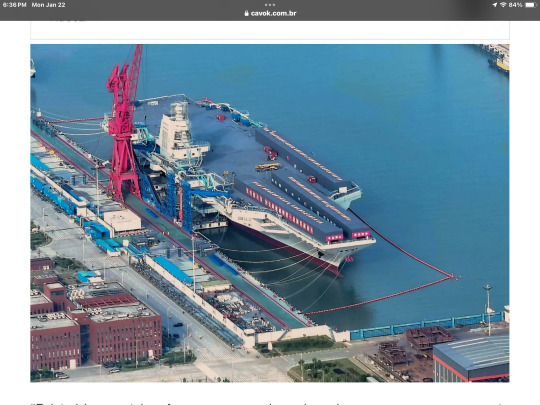
“Related images taken from passenger planes have become a common source to track the progress of several important programs (of the ELP Navy),” Naval News reported.
Fujian is certainly a remarkable program for the ELP Navy. The 80,000-ton warship, the largest military ship ever manufactured in China, is considered a rival of the newest U.S. Navy aircraft carriers of the Gerald R Ford class, one of the few other aircraft carriers to use electromagnetic catapults to launch aircraft.
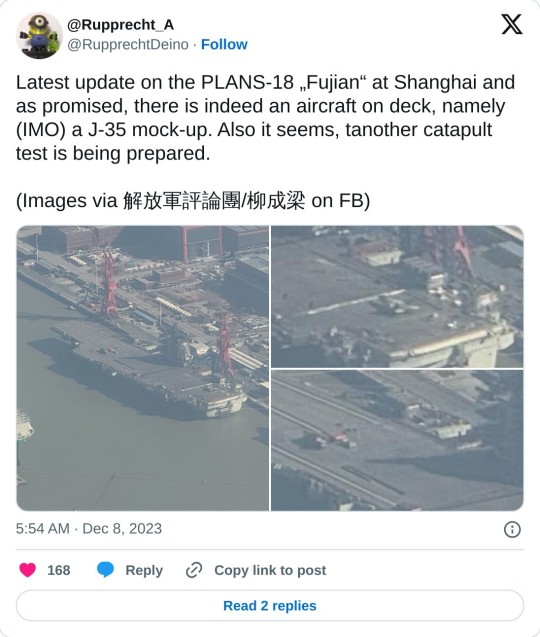
The photos of the alleged catapult test gave Western analysts an idea of how the ELP Navy is progressing in preparing the aircraft carrier for commissioning and active service.

Image of the Fujian catapult tests.
And these images are not the first of Fujian to appear online.
In April 2023, the state broadcaster CCTV announced in a report that in November 2021, Mr. Luo, a "quite renowned" military enthusiast, was sentenced to one year in prison after his arrest by the Shanghai National Security Department for photographing the Fujian aircraft carrier.
Luo used a drone capable of shooting long-range and high-resolution photos, the report said.
Recently, new images on Chinese social networks began to appear with means of censorship.
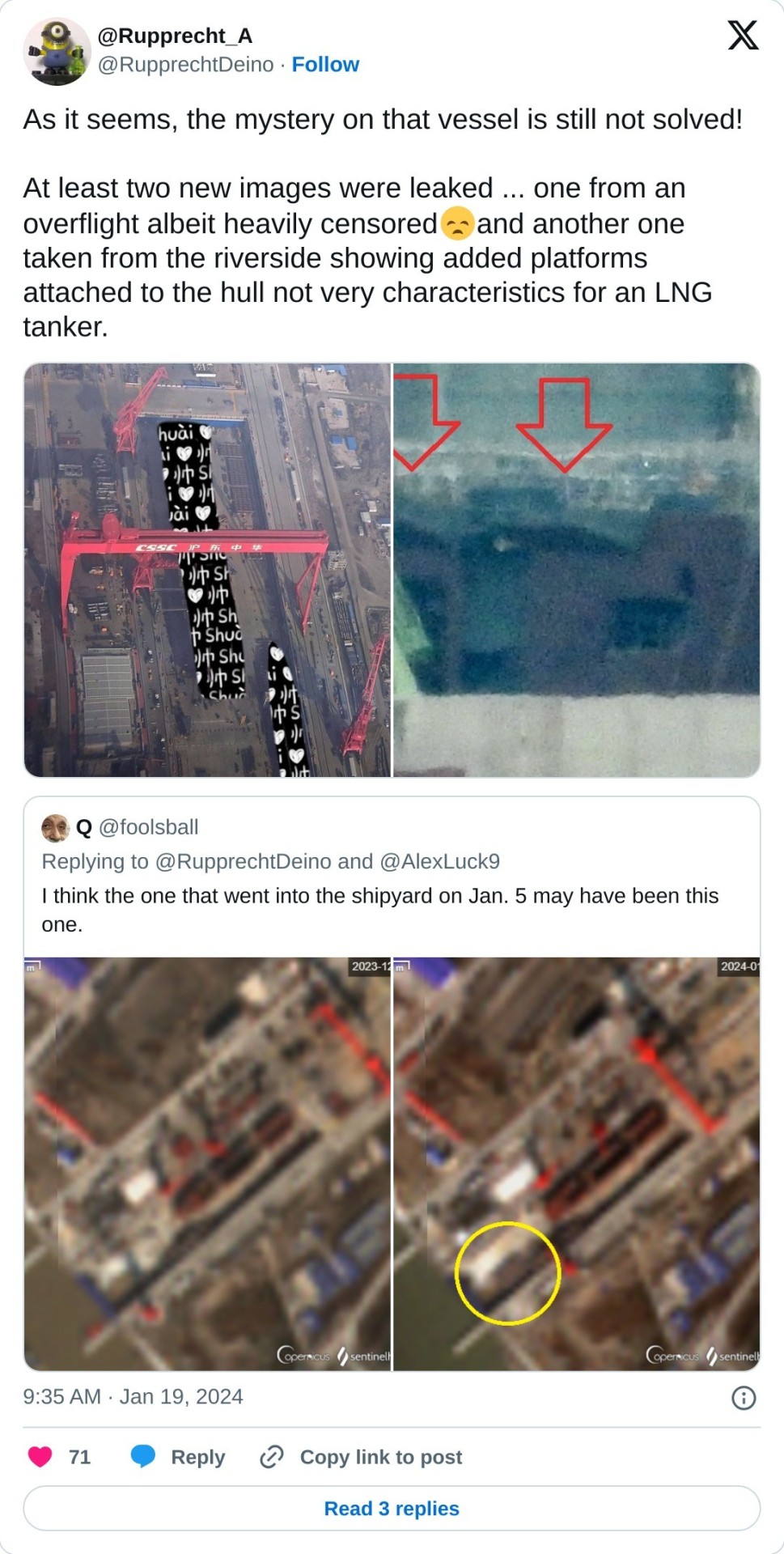
How the US deals with images
It is not only China that is suspicious of what amateur military observers can do to reveal confidential information.
U.S. law says that the President may designate certain military facilities and equipment as prohibited to image makers.
"It will be illegal to make any photograph, sketch, image, drawing, map or graphic representation of such vital military and naval facilities or equipment," unless due permission is obtained before, states the U.S. Code. Offenders can be arrested for up to one year in prison.

Near the famous Area 51 in Nevada it is possible to see signs that do not authorize photos and the use of drones.
Of course, the military can sometimes use open source intelligence to their advantage, said Carl Schuster, former director of operations of the Joint Intelligence Center of the U.S. Pacific Command.
After photos of a supposed model of China's next-generation stealth fighter appeared online in September, Schuster told CNN that “given the location of the aircraft carrier and the likelihood of operations on the deck being photographed or filmed, the PLA [Navy] can see value in inciting speculation about Fujian's future air wing,” just to give opponents something to think about.
Source: CNN
Tags: ChinaPLAN - People's Liberation Army Navy / People's Liberation Army Navyaircraft carrierspotters
Sharing
tweet
Fernando Valduga
Fernando Valduga
Aviation photographer and pilot since 1992, he has participated in several events and air operations, such as Cruzex, AirVenture, Dayton Airshow and FIDAE. He has works published in specialized aviation magazines in Brazil and abroad. He uses Canon equipment during his photographic work in the world of aviation.
Related news
HELICOPTERS
IMAGES: Updated Chinese AC313A helicopter is tested in adverse weather conditions
19/01/2024 - 21:18
MILITARY
China offered its Y-20 transport plane to Nigeria
13/01/2024 - 19:00
MILITARY
Russia wants to build new aircraft carrier as the Russian Navy expands capabilities
10/01/2024 - 20:16
TECHNOLOGY
China reveals wing technology that turns into flight for future aircraft
01/10/2024 - 10:00
COMMERCIAL
AVIC accelerates certification of the AG600M firefighting aircraft
09/01/2024 - 20:00
MILITARY
China releases new images of its next-generation aircraft carrier
04/01/2024 - 11:00
22 notes
·
View notes
Text


Comparison between the enlarged VentureStar and the X-33.
"This artist's rendering depicts the NASA/Lockheed Martin X-33 technology demonstrator alongside the Venturestar, a Single-Stage-To-Orbit (SSTO) Reusable Launch Vehicle (RLV). The X-33, a half-scale prototype for the Venturestar, is scheduled to be flight tested in 1999. NASA's Dryden Flight Research Center, Edwards, California, plays a key role in the development and flight testing of the X-33. The RLV technology program is a cooperative agreement between NASA and industry. The goal of the RLV technology program is to enable signifigant reductions in the cost of access to space, and to promote the creation and delivery of new space services and other activities that will improve U.S. economic competitiveness. NASA Headquarter's Office of Space Access and Technology is overseeing the RLV program, which is being managed by the RLV Office at NASA's Marshall Space Flight Center, located in Huntsville, Alabama. The X-33 was a wedged-shaped subscale technology demonstrator prototype of a potential future Reusable Launch Vehicle (RLV) that Lockheed Martin had dubbed VentureStar. The company had hoped to develop VentureStar early this century. Through demonstration flight and ground research, NASA's X-33 program was to provide the information needed for industry representatives such as Lockheed Martin to decide whether to proceed with the development of a full-scale, commercial RLV program. A full-scale, single-stage-to-orbit RLV was to dramatically increase reliability and lower costs of putting a pound of payload into space, from the current figure of $10,000 to $1,000. Reducing the cost associated with transporting payloads in Low Earth Orbit (LEO) by using a commercial RLV was to create new opportunities for space access and significantly improve U.S. economic competitiveness in the world-wide launch marketplace. NASA expected to be a customer, not the operator, of the commercial RLV. The X-33 design was based on a lifting body shape with two revolutionary 'linear aerospike' rocket engines and a rugged metallic thermal protection system. The vehicle also had lightweight components and fuel tanks built to conform to the vehicle's outer shape. Time between X-33 flights was normally to have been seven days, but the program had hoped to demonstrate a two-day turnaround between flights during the flight-test phase of the program. The X-33 was to have been an unpiloted vehicle that took off vertically like a rocket and landed horizontally like an airplane. It was to have reached altitudes of up to 50 miles and high hypersonic speeds. The X-33 program was managed by the Marshall Space Flight Center and was to have been launched at a special launch site on Edwards Air Force Base. Due to technical problems with the liquid hydrogen tank, and the resulting cost increase and time delay, the X-33 program was cancelled in February 2001."
Date: September 23, 1999
source
NASA Identifier: NIX-ED97-43929, ED97-43938-1
#Lockheed Martin X-33#Lockheed Martin X-33 Venture Star#X-33#Venture Star#Reusable Launch Vehicle#RLV#lifting body#NASA#my post#September#1999
50 notes
·
View notes
Text
Analysis: Ukraine War X Brazil Crisis Could Affect Musk's Power Over the Military
Billionaire has enormous influence in the global defense sector

Starlink's retreat in the dispute between Elon Musk and Alexandre de Moraes signals a new development in the once seemingly unstoppable rise of the controversial billionaire as the principal behind-the-scenes figure in one of the world's most important sectors: defense. His business with the Brazilian military is minimal: 15 antennas donated to support Army operations and five contracts totaling R$ 239,000 ($ 43,000) with the Navy. Bigger deals are on the horizon.
The most notable one is a bid opened by the Army for a still modest R$ 5.1 million ($ 895,000) to expand operations in the Amazon, a vast region where 90% of cities use Musk’s satellite internet coverage. The key aspect is not the money, but the modus operandi.
Through his endless technical and financial capabilities, Musk offers the full package: he produces the rocket and satellite, then launches them into orbit at a competitive cost. Beyond the commercial aspects of this entrepreneurial and technical triumph, problems are beginning to arise. While Starlink’s thousands of satellites help Brazilian riverside communities access the internet, they are also used for much more complex purposes.
Source.
#brazil#politics#twitter#ukraine#elon musk#brazilian politics#russia#ukraine russia war#starlink#international politics#military#image description in alt#mod nise da silveira
5 notes
·
View notes
Text
Hot take but one of the things I'll defend movies like Man of Steel on that a lot of people criticize is the "product placement". To me, that term is overextended because technically its the same either way. There's a difference between fetishistic framing of a brand, such as cars in television shows often do, and what goes on in movies like Man of Steel. And to be clear that one's just the example because it's the most criticized example I can think of that shows what I'm fine with.
In situations like that movie, the brands aren't being given central obsessive framing like it's a commercial. The brands are just there and exist where you would expect them too. And the thing is, in some other mediums, this is normal. Books for example typically operate this way. Video games used to, but since going mainstream do less and less (although you can look at something like Wasteland 2 for a more recent example). Brands are a part of reality and if you are portraying reality, they just exist.
What media does to get around the risk of stupid lawsuits for a brand existing is to create fake brands and put them in place of real brands. And in some genres, this works fine. In satire. In Saints Row 2, the main fast food place is a horny parody of Wendy's called "Freckle Bitch's". And that's fine, because SR2 is not meant to be set in a world like our own. It's set in a parody of our world. It's a heightened extreme nonsense world. Of course their biggest fast food place is called "Freckle Bitch's". Of course its main competitor is a military-themed place called "Company of Gyros". It's an insane world.
But works like Man of Steel are not supposed to be set in such an insane world. They're supposed to be set in a world that was like reality until the plot happened, or on lower scale things, are like reality period. And in those situations, having bland-name products actually fucks with my immersion.
Why? Because I start thinking about the ripple effect. Imagine a world where Coca-Cola never existed. Where did the red-and-white Santa Claus come from? What made Santa popular in this timeline? Why was cocaine outlawed? Why did caffeinated beverages take off in the USA in this timeline?
You remove Coke from the timeline, you have altered the flow of time so heavily, and that's just in the states. You remove an American food/beverage megacorp from the timeline, you've radically altered the history of at least one nation in the global south regarding some atrocities. Imagine the effects of removing Nestle from the timeline.
So my brain just immediately gets sidetracked wondering about the lore of the universe you've created. How has history gone differently because of the changes you made to the capitalist landscape? This probably would end up changing election outcomes, maybe not on a presidential level but at least at lower rungs. What sort of ripple effects can this have? Again, you remove Coke, you change the entire history of Santa Claus, so that's pretty major.
If you just keep the brands the same as they are in reality, you don't have this implication of an entire alternate history behind your universe that's never going to be explored or explained and freaks like me are going to think way too much about.
6 notes
·
View notes
Text
Pre-G1 Modules, part 1 - Temple of the Frog

So we're going to blow through this really fast cus there's a lot to cover -- I have 9 modules to go through before we hit G1.
G1 enjoys the reputation of "first DND module", but the reality is a little more complicated than that. G1 is more properly, "The first published standalone TSR adventure module". Which, as you can guess by the number of qualifiers, means it's not the first anything, really.
In the beginning, Tactical Studies Rules was Don Kaye, Gary Gygax, and Dave Arneson in a design capacity. They flopped around for a while, stealing copyrighted shit for money, releasing mediocre wargames, and eventually shrug and release DND anyway. It does very well. Don Kaye dies, they reorganize TSR into TSR Hobbies because Don's wife didn't like being involved, and we have enough preamble to get to Temple of the Frog.
TSR Hobbies had pole position to win the race to first adventure, and it worked, although for a variety of reasons (like Gary not really getting why someone would want to buy a premade adventure), they didn't publish discrete adventure scenarios. The first published, commercial adventure is technically in the original D&D ("Little Brown Booklet") supplement #2, Blackmoor: Temple of the Frog, and the dungeon is Arneson's.
Keeping in your head that Temple of the Frog is the literal first adventure is the very first adventure because this is basic as hell. There's a cult to the frogs, they're trying to make the most bestest amphibian monsters, and 1.0 twists.

It's kinda charming though. This could be anyone's first map. My first maps looked kind of like this, in fact my first dungeon map was also a big church. A lot of early conventions are already here: a map is provided, on grid paper. Rooms are keyed, evocative descriptions are given (although this is actually pretty ho-hum, stating things as boring fact). The preamble is adequately interesting, but doesn't really establish any important context information about the actual conquering of this temple (the key system would be nice to have first, rather than buried halfway in, but be nice it's the first one). Conspicuously missing: any information about suggested starting level or party size. Now there is a old-school tendency that the levels of a dungeon should increase in difficulty about one level per….level.
In traditional Arneson form, there's some scifi bullshit going on. Here's some fast tidbits about this module:
The new head of the temple is an alien. His magic devices are all technological devices. There's spaceships. It's not my jam, but you simply have to accept that scifi/fantasy fusion was the trope of the time, it is completely ubiquitous in 70s fantasy books.
There is a weirdly complicated system of magic (technology) rings that control doors. There's a hierarchy to them that takes a whole page. It's clearly very important to Dave!
There's something about timeshifting that is, frankly incomprehensible to me. I do like hiding the big secret lair under a giant organ, though.
After you get through the first floor of so, so many people wandering around, we finally have monsters. A room of medusae (former captives), gargoyles operated with scifi bullshit, magic chains that turn off traps, giant rats and skeletons.
There's some very fun verbiage here, "each [medusa] taking 16 hit points". Like, taking 16 points worth of hits. It makes sense but there's something very fascinating of seeing this period where the metaphor of hitpoints is not just A Thing That Has Always Existed, but clearly something you have to explain to people and they are still thinking of it in less abstract ways.
Some further fun verbiage is that at this point, "Dungeons and Dragons" is a specific book that you can reference in the way you nowadays would say "Check the Dungeon Master's Guide". Check the Dungeons and Dragons! (Fun fact: the titular Dungeon with Dragons is, in fact, Blackmoor Castle's Dungeons.)

This sentence drove fear into my heart. You are bolder than me if you're gonna run an encounter that has 1,200 enemies in it. In what I can only describe as rank cruelty, cloudkill expressly doesn't work on them.
And then the adventure just kind of ends. Dave, buddy, you can't tell me that the alien-priest reports back to the mothership and give me no means to go there. That's malpractice man! It would be my literal first port of call if I was rewriting this. I NEED TO SEE THE FROG FANDOM ALIENS' SPACESHIP.
Overall, the vibes are still very wargame. The building is a castle that feels like it's meant to be sieged more than raided. But it's the first! Anyone who runs this in 2024, and in a modern game engine, deserves a kiss on the forehead for their hard work.
10 notes
·
View notes